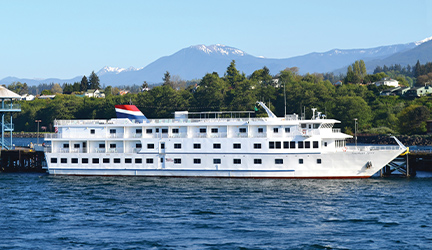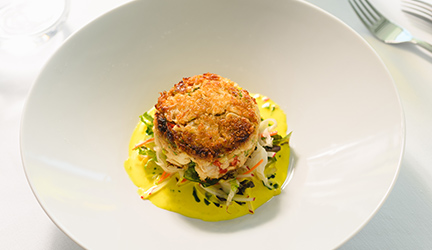From profound peaks to cascading coastlines, Olympic National Park offers an unparalleled diversity of landscapes and wildlife. Perfect for nature lovers, history buffs, or adventure seekers, this park has something for everyone. Nestled on Washington’s Olympic Peninsula, it’s a must-see for travelers, especially those cruising Puget Sound & San Juan Islands. Wondering when to visit? Check out the best time to cruise Puget Sound blog for helpful tips.
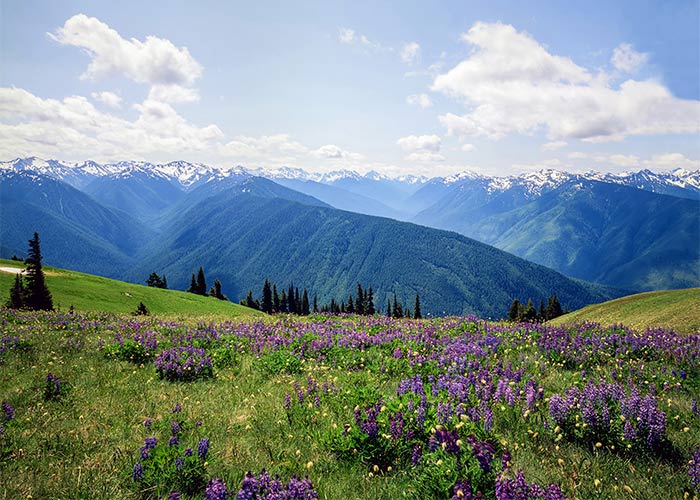
Hurricane Ridge
Hurricane Ridge comes alive in spring and summer with breathtaking views and blooming wildflowers. On a clear day, the alpine meadows are dotted with lupines and trillium, creating a stunning portrait against the backdrop of snow-capped peaks. These warmer months invite visitors to explore hiking trails like the Cirque Rim Trail, one of the many beautiful Olympic National Park Trails, ensuring unparalleled vistas.
The Ridge’s name reflects the winds that sometimes sweep through this alpine wonderland, but during spring and summer, it’s an absolute haven. Trails provide access to vibrant ecosystems, and the ridgeline is a prime spot for picnicking and photography.
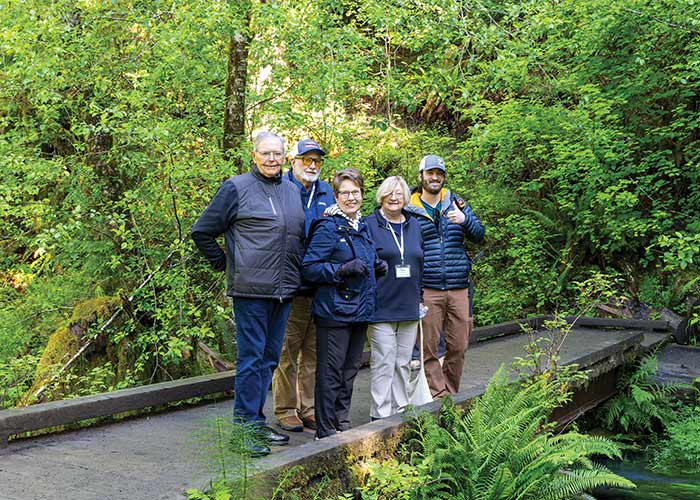
Hoh Rain Forest
Walking through the Hoh Rain Forest is like entering a living cathedral, where the columns are ancient Sitka spruces, and the ceiling is a dense canopy of moss-draped branches. This UNESCO World Heritage site receives ample rainfall, nurturing one of the world’s most pristine temperate rainforests. During these seasons, vibrant new growth and blooming wildflowers enhance the forest’s natural beauty.
The area’s history stretches back thousands of years, as it was home to the Quinault and Hoh peoples, who revered the forest as a source of life and wisdom. Visitors today can glimpse Roosevelt elk—a species central to the park’s establishment in 1938—and hear the melodic calls of varied songbirds echoing through the woods. For a deeper dive into local fauna, explore the Puget Sound wildlife blog.
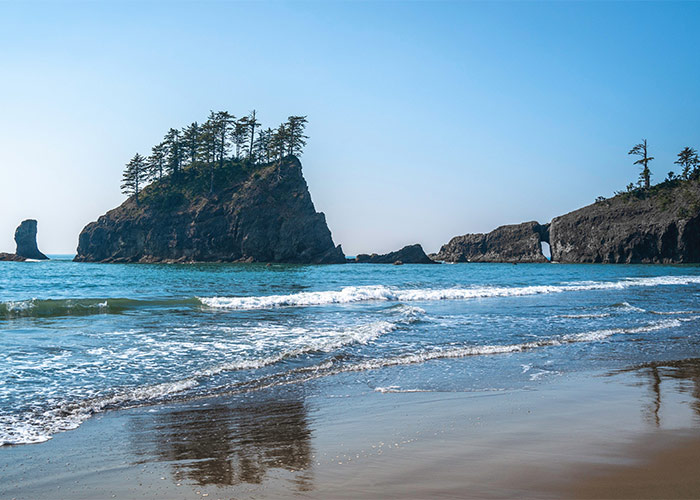
Kalaloch and Ruby Beach
Kalaloch is one of the most visited areas of Olympic National Park. Ruby Beach, named for its garnet-colored sand, is a place of stark contrasts—dark sea rises from the foaming waves, while tide pools shimmer like tiny, hidden worlds. Driftwood, bleached by salt and time, forms surreal sculptures along the shore.
This coastline has long been a vital fishing ground for local Indigenous tribes, whose connection to the sea endures. Observe bald eagles soaring overhead and gray whales migrating offshore, making this an unforgettable experience for wildlife enthusiasts.
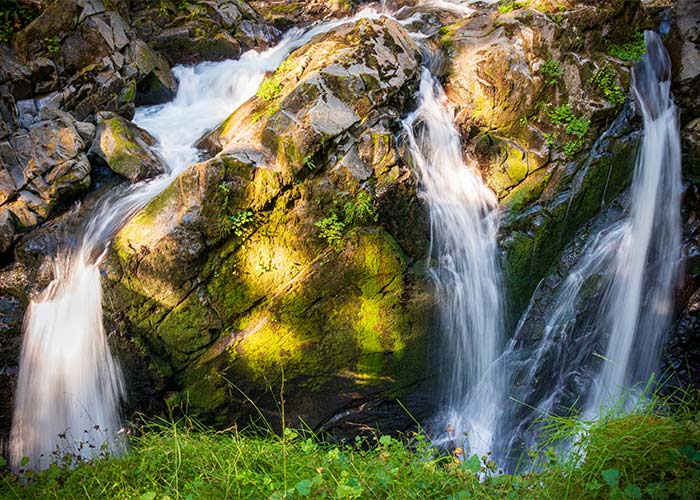
Sol Duc Valley
Sol Duc Valley is a lush paradise where the scent of cedar and the sound of cascading water fill the air. Sol Duc Falls, a three-pronged waterfall framed by emerald foliage, is a must-see, accessible via a short and enchanting walk.
This valley has been a gathering place for centuries. Indigenous peoples used the hot springs for their healing properties, a tradition carried on by visitors soaking in the mineral-rich waters at Sol Duc Hot Springs Resort. The Lover’s Lane Trail loops through old growth forests, offering glimpses of wildlife such as black bears and river otters.
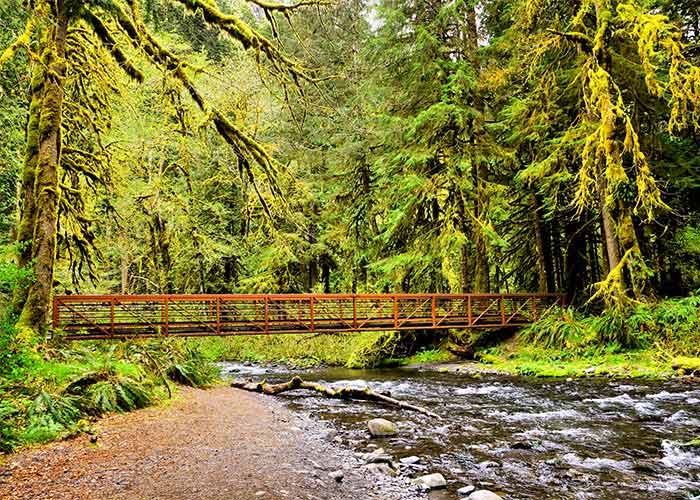
Olympic National Forest
Encircling the park, the Olympic National Forest feels like a verdant embrace. Here, towering Douglas firs and western red cedars stand sentinel over winding rivers and hidden trails. The forest’s history is full of tales of loggers and conservationists whose legacies shaped this protected land.
Walk the Colonel Bob Trail for sweeping views of Lake Quinault and the surrounding peaks or cast a line into one of the many rivers teeming with salmon. Springtime blossoms and summer’s greenery make this area a serene retreat from modern life.
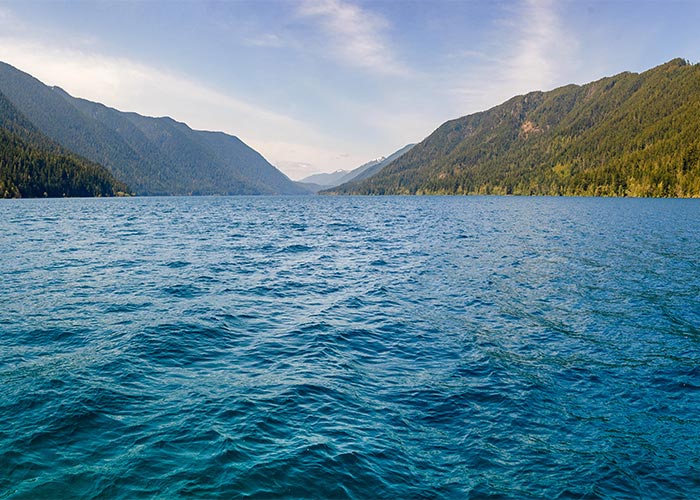
Lake Crescent
Lake Crescent’s waters shimmer like liquid sapphire in spring and summer, a testament to the glacier that carved this stunning lake eons ago. Its remarkable clarity is owed to its low nitrogen levels, which limit algae growth, creating a mirror-like surface that reflects the surrounding evergreen-covered peaks.
For centuries, the Klallam people lived along its shores, calling it “Tsiq’Lhs,” or “Deep Water.” Visitors in these warmer months can travel to Marymere Falls, where a graceful 90-foot cascade plunges into a mossy ravine, or paddle across the lake to take in its tranquil beauty.
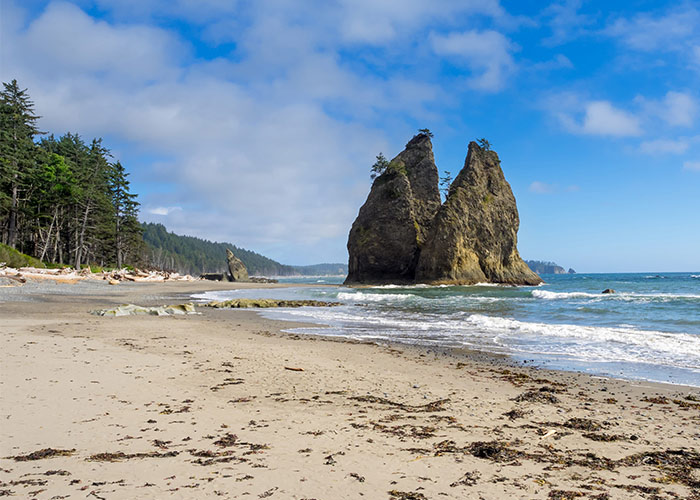
Rialto Beach
Rialto Beach is at its most mesmerizing in spring and summer, when the wild Pacific meets timeless wonder. Watch the sea rise dramatically from the surf. The tide pools at low tide are brimming with vibrant sea stars, anemones, and crabs.
Hole-in-the-Wall, a natural rock arch, is a favorite for photographers and hikers alike. Offshore, orcas and porpoises can often be seen, adding to the magic of this coastal treasure.
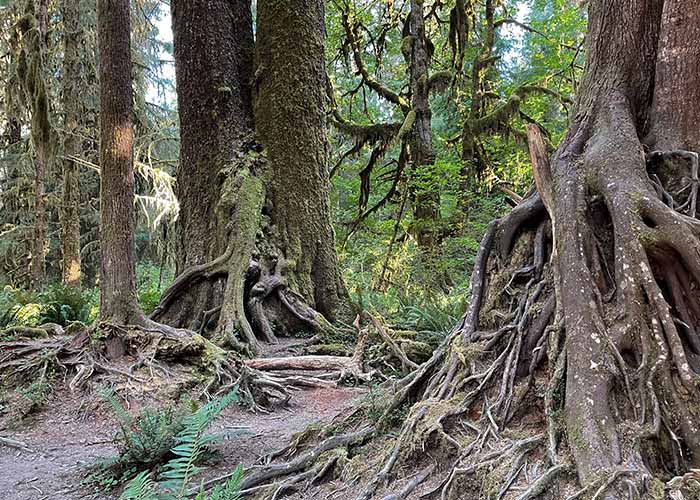
Quinault Rain Forest
Known as the “Valley of the Rain Forest Giants,” the Quinault Rain Forest is a realm of record-breaking trees and abundant life. In spring and summer, the towering Sitka spruces and western red cedars are adorned with vibrant new growth, creating a canopy of green.
The Quinault River, fed by melting glaciers, flows serenely through the valley, its waters reflecting the branches above. Canoeing, fishing, and hiking are popular activities, while the Big Tree Trail leads to some of the largest trees on Earth. This area, once home to the Quinault people, remains steeped in history and natural grandeur.
Plan Your Olympic Adventure
Olympic National Park’s diverse ecosystems and rich history make it a destination like no other. Whether you’re wandering through the towering giants of Quinault or marveling at the windswept beauty of Ruby Beach, every corner of the park tells a story. Ready to explore? Start planning your trip with American Cruise Lines or learn more about our National Parks cruises.

